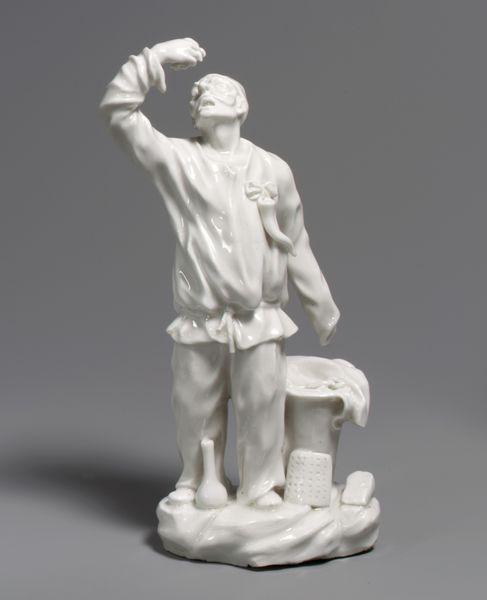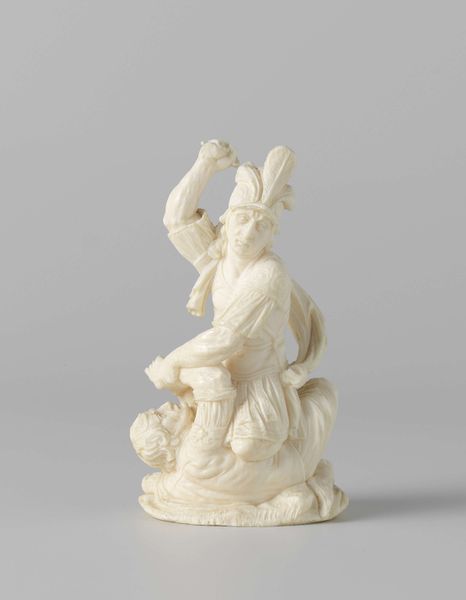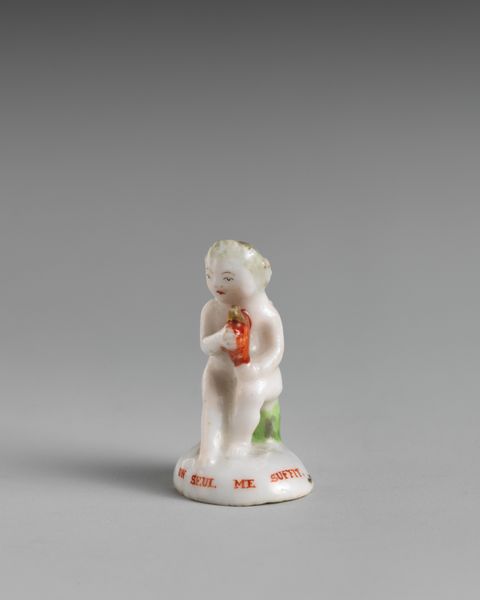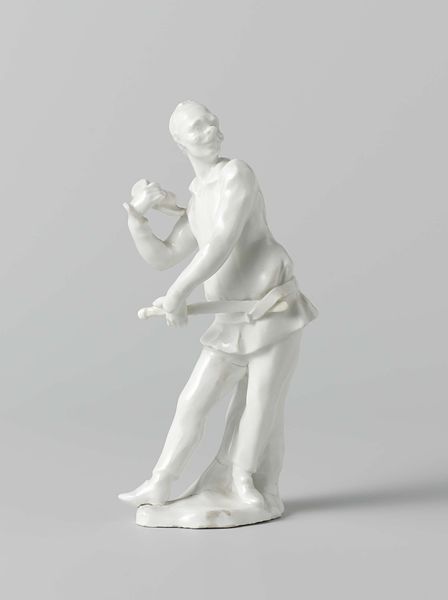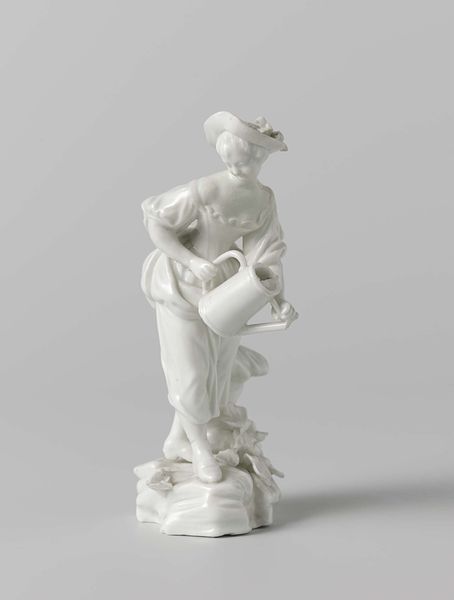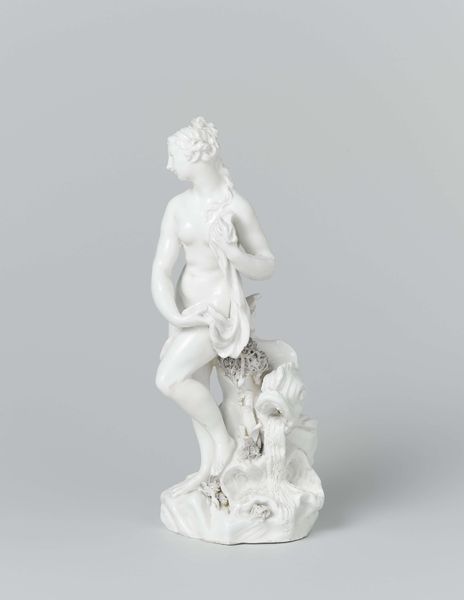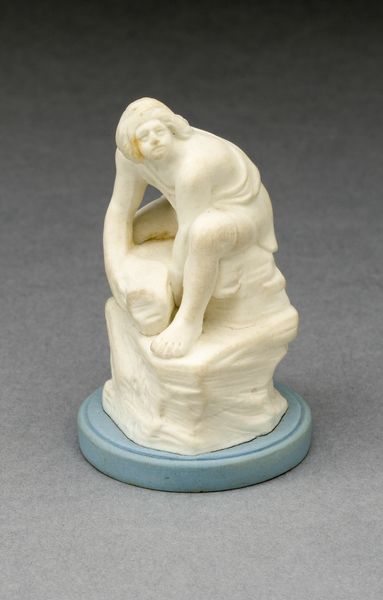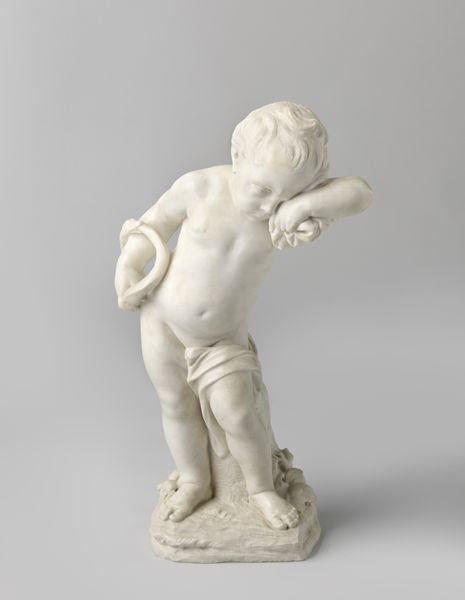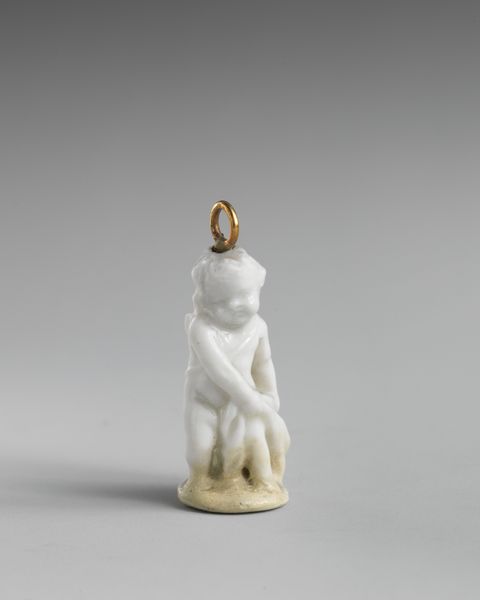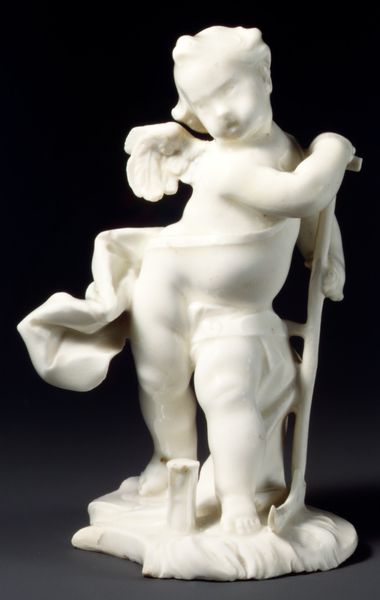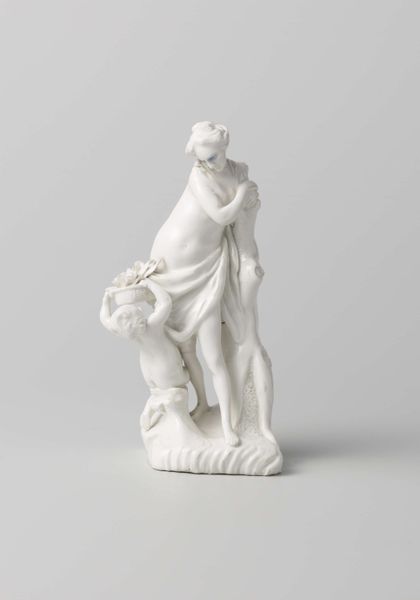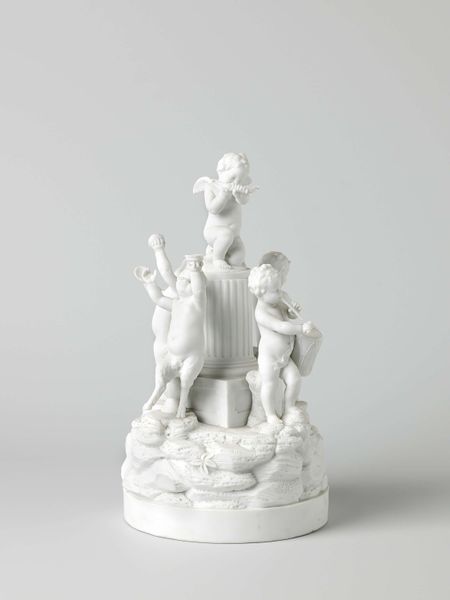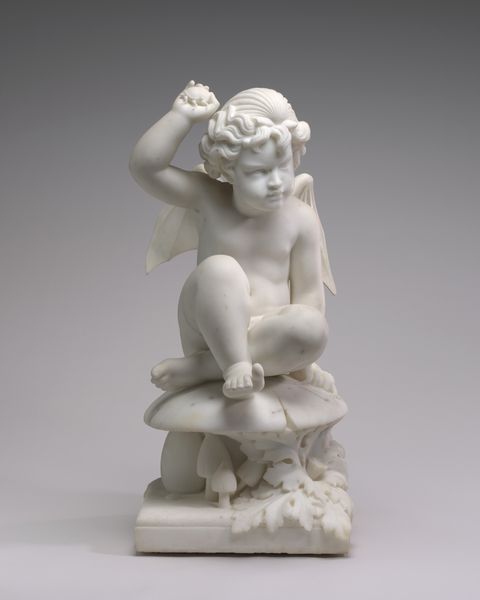
porcelain, sculpture
#
animal
#
porcelain
#
figuration
#
sculpture
#
rococo
Dimensions: height 12.5 cm, width 6 cm, depth 9.1 cm
Copyright: Rijks Museum: Open Domain
Editor: This is the porcelain "Figure of a monkey," made around 1752 to 1757 by Wilhelm Caspar Wegely. It's quite small and delicate, and the stark whiteness of the piece gives it an almost ethereal quality. What immediately strikes you about its formal composition? Curator: Note how the artist has manipulated the porcelain to create a tension between realism and stylization. The musculature is rendered with surprising detail, especially in the torso and limbs. Yet, the pose—a seated monkey consuming something—is highly mannered, adhering to Rococo ideals of playful elegance. Consider the S-curve of the body; how does that contribute to the overall effect? Editor: It definitely softens what could have been a much more literal depiction, adding to that playful elegance you mentioned. What else stands out to you, focusing on those formal qualities? Curator: I am interested by the contrast between the smooth surfaces of the monkey's skin and the more textured base, which suggests a naturalistic setting. That roughage enhances the figure's presence by juxtaposition. Editor: That’s a great point; the contrast really emphasizes the figure itself. I initially overlooked how that asymmetry with the log adds some stability. I learned about appreciating those textural contrasts as important formal components. Thanks! Curator: Indeed. Attending to material contrasts reveals critical relationships between form and representation. That asymmetry provides balance and dynamism.
Comments
No comments
Be the first to comment and join the conversation on the ultimate creative platform.
